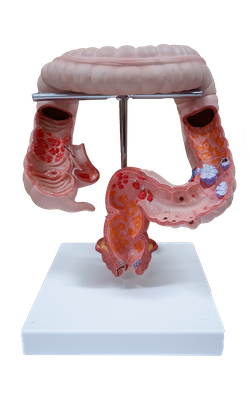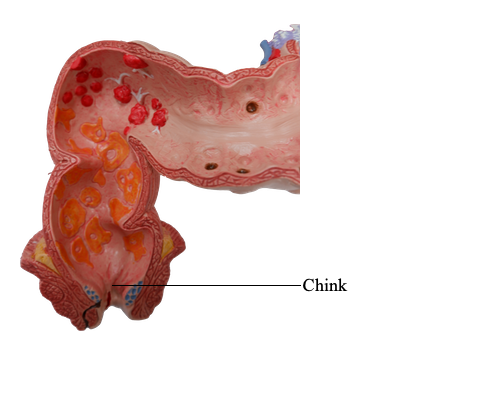Main Model

Chink

Anal Fissures; Ischio-anal and Peri-anal Abscesses
The ischio-anal fossae are occasionally the sites of infection, which may result in the formation of ischio-anal abscesses. These collections of pus are painful. Infections may reach the ischio-anal fossae in several ways:
• After cryptitis (inflammation of anal sinuses).
• Extension from a pelvirectal abscess.
• After a tear in the anal mucous membrane.
• From a penetrating wound in the anal region.
Diagnostic signs of an ischio-anal abscess are fullness and tenderness between the anus and the ischial tuberosity. A peri-anal abscess may rupture spontaneously, opening into the anal canal, rectum, or peri-anal skin. Because the ischio-anal fossae communicate posteriorly through the deep post-anal space, an abscess in one fossa may spread to the other one, and form a semicircular "horseshoe-shaped" abscess around the posterior aspect of the anal canal.
In chronically constipated persons, the anal valves and mucosa may be torn by hard feces. An anal fissure (slit-like lesion) is usually located in the posterior midline, inferior to the anal valves. It is painful because this region is supplied by sensory fibers of the inferior rectal nerves. A peri-anal abscess may follow infection of an anal fissure, and the infection may spread to the ischio-anal fossae and form ischio-anal abscesses or spread into the pelvis and form a pelvirectal abscess.
An anal fistula may result from the spread of an anal infection and cryptitis (inflammation of an anal sinus). One end of this abnormal canal (fistula) opens into the anal canal, and the other end opens into an abscess in the ischio-anal fossa or into the peri-anal skin.